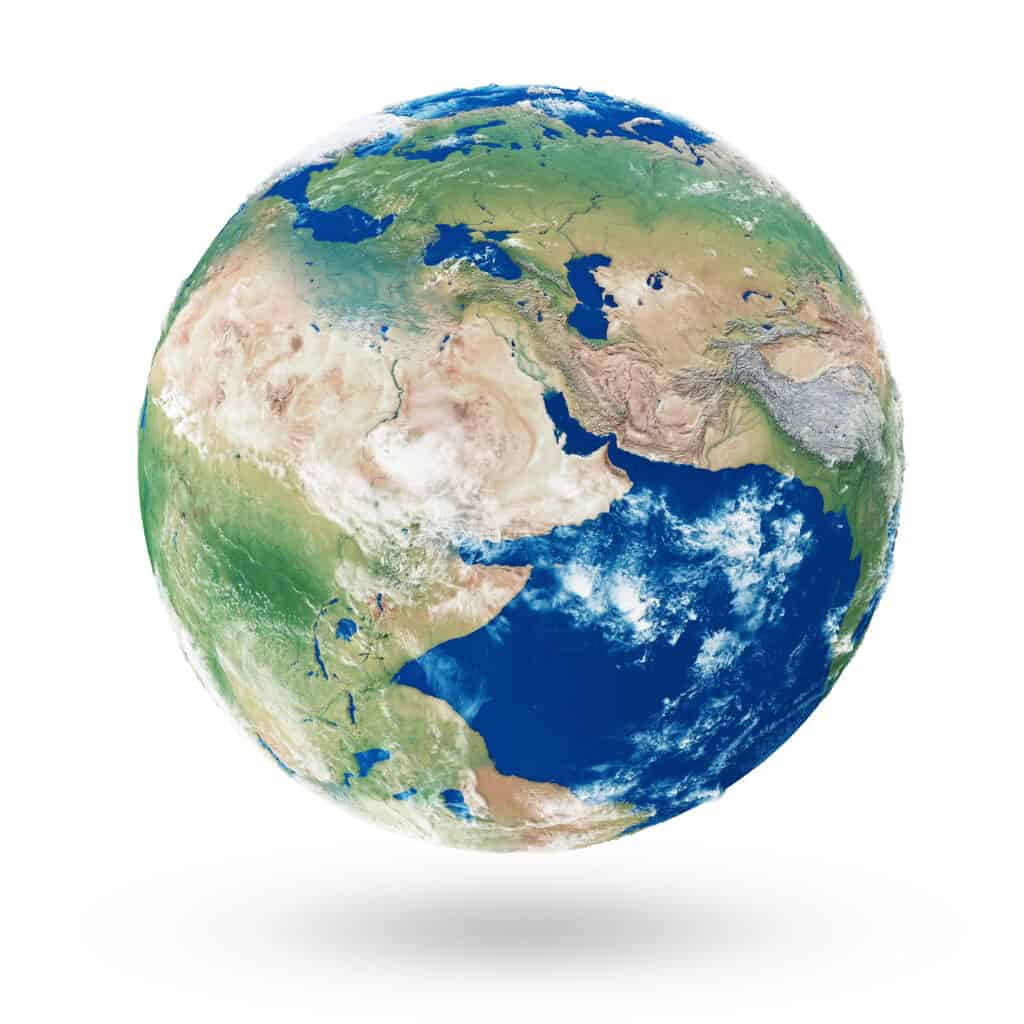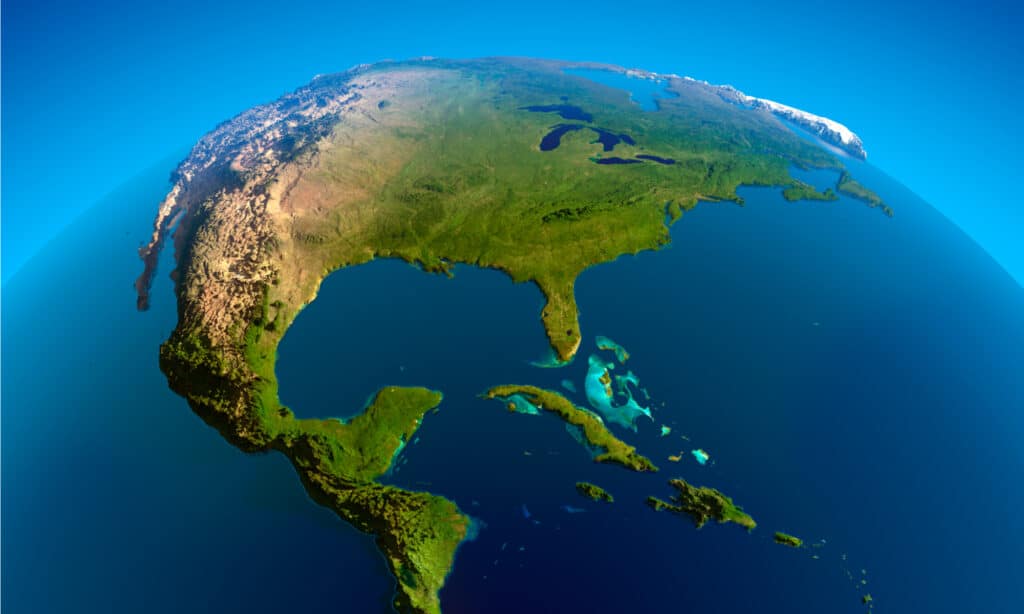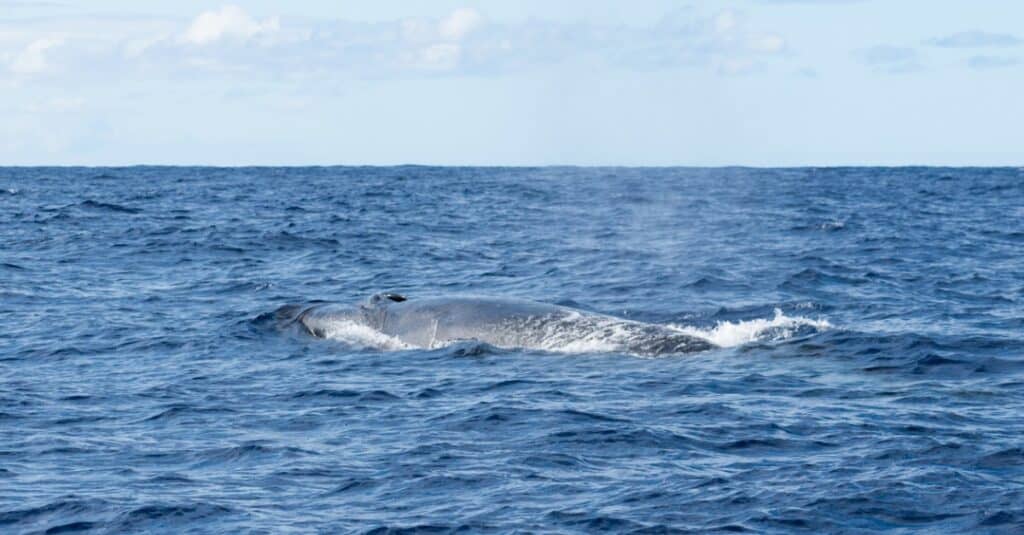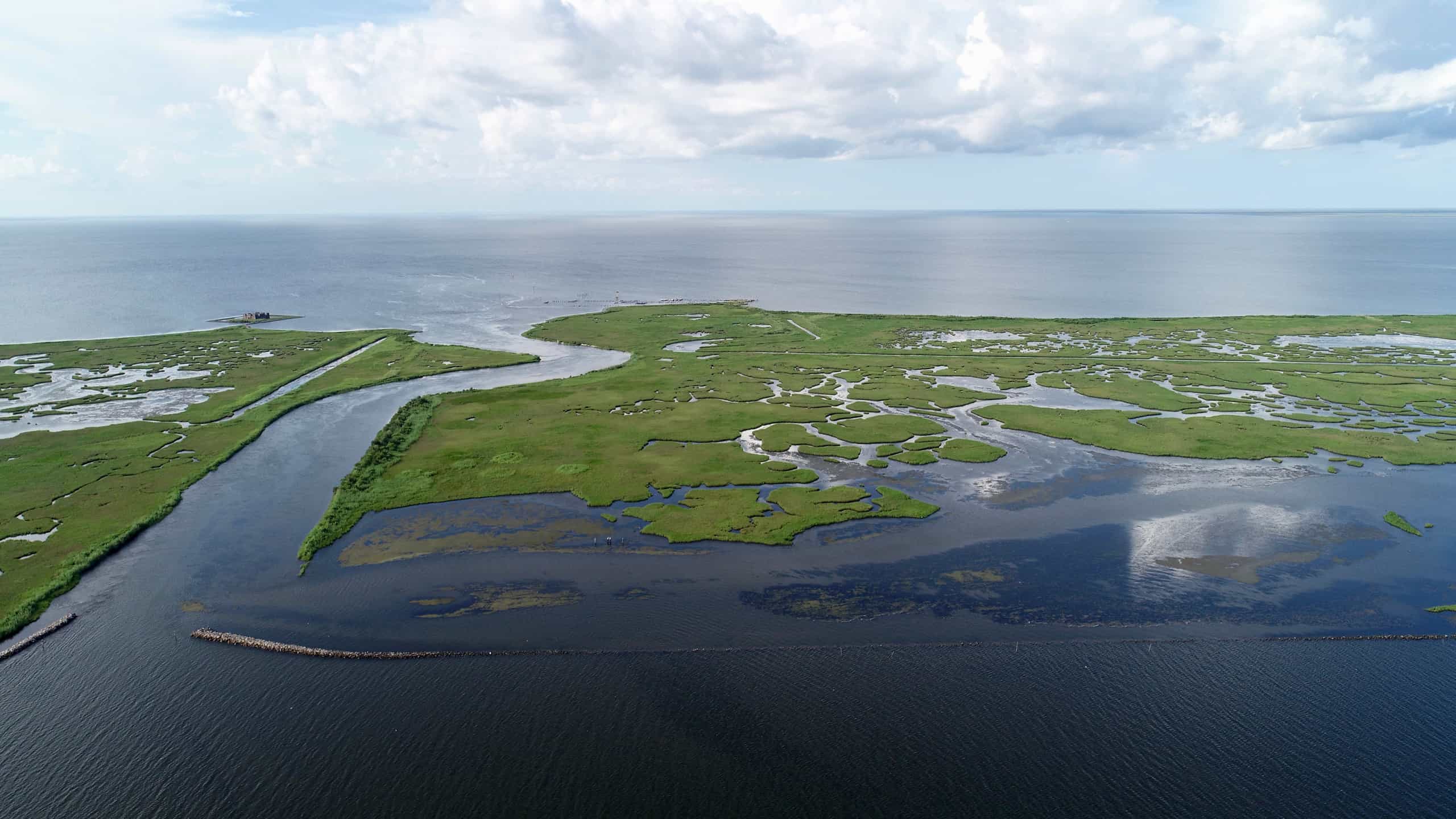The Gulf of Mexico spans the southeastern portion of North America’s coastline. It touches 5 of the United States, along with bordering the entire eastern coast of Mexico. Several small islands sit in the gulf, and Cuba guards the edge of it. The Gulf states – Alabama, Mississippi, Florida, Texas, and Louisiana – contain diverse biomes due to their connection to the Gulf of Mexico. We’ll explore the wildlife and habitats of these states, but first, let’s take a look at how and when the Gulf of Mexico came to be.
Formation of the Gulf

The Earth 200 million years ago: Pangea.
©Rashevskyi Viacheslav/Shutterstock.com
The Gulf of Mexico is a basin that formed over 200 million years ago as a result of rifting in tectonic plates. North America didn’t always look the way it does now. Tens of millions of years ago, it was contiguous with several other continents, including Africa, Europe, and South America. Pangea, the land mass that broke into four of our major modern continents, existed from the late Paleozoic Era all the way to the end of the Triassic Era. Pangea began to split at the end of the Triassic Era due to volcanic rift activity. Magma seeped through the Earth’s crust and created a three-pronged fissure. This fissure slowly divided North America, Africa, and South America. As the fissure grew, the continents began to drift further apart, creating an ocean basin – the Atlantic Ocean.
As North America continued to move westward, it drifted out of the rift zone. The Gulf of Mexico formed slowly due to this continental drift and became a stable geological province about 135 million years ago. Geological stability refers to an area or landmass’s ability to retain structure. The Gulf didn’t fill with water all at once – the Florida platform filled 140 million years ago while the Yucatan platform didn’t fill until 100 million years ago.
All of this happened long before humans walked the Earth. The first known presence of hominins only dates back 6 million years to the Miocene Epoch. Homo sapiens – humans – didn’t appear until far later still, about 550,000 to 750,000 years ago. This means that Pangea began to split over 199 million years prior to human existence.
More About the Gulf of Mexico
The Gulf of Mexico is a massive body of water. It spans 617,800 square miles and is the largest gulf in the world. It is also the 9th largest body of water in the world. The gulf has over 3,700 miles of coastline. For comparison, consider that the maximum width of the United States is only 2,802 miles. The United States portion of the Gulf’s coastline is 1,680 miles long.
For a size comparison of the entirety of the gulf, let’s compare it to a couple of the states that touch its waters. Texas, the second largest state in the United States, has a square mileage of 268,597. That means that Texas could fit into the Gulf of Mexico 2.3 times. Florida, the 22nd largest state by area, is 65,758 square miles and could fit into the gulf 9.4 times!
Most of the gulf is significantly more shallow than the Atlantic Ocean. It has an average depth of 5,300 feet, versus the average Atlantic depth of 10,932 feet. Its maximum depth is just over 14,000 feet, compared to the Atlantic’s 28,232 feet.
Major Rivers That Feed the Gulf

The Mississippi River is North America’s largest watershed, and it drains about 40 percent of North America’s water into the Gulf of Mexico.
©Joe Ferrer/Shutterstock.com
Several major rivers drain into the Gulf of Mexico. In the Northern Gulf, the Mississippi, the Atchafalaya, and the Rio Grande are the main distributors of water to the Gulf. In the Southern Gulf, it is the Grijalva and the Usumacinta. All in all, 33 major rivers drain into the Gulf, moving water through 31 states.
It is hard to imagine the amount of water that floods into the gulf from these rivers every day. The Mississippi alone drains 4.5 million gallons of water per second into the Gulf. Unfortunately, much of this water is overly dense in nutrients such as nitrogen and phosphorus and forms a lifeless area in the gulf known as the dead zone.
The Dead Zone

View of the Gulf of Mexico from space.
©Anton Balazh/Shutterstock.com
The dead zone is a growing area of water that contains too many nutrients for oxygen to exist in the water. Nitrogen, phosphorus, and other minerals and chemicals drain into the Mississippi River from rainfall and runoff from lawns, farmland, sewage treatment plants, and a variety of other sources. These minerals and nutrients, while necessary for crop growth and fertile soil, are dangerous to the waters of the Gulf. The dense collection of nutrients triggers large algae blooms that choke the oxygen from the waters of the Gulf.
Algae blooms are a natural part of the Earth’s balance. Under proper conditions, these blooms are critical for ecosystems. A proper amount of algae in a natural environment controls nitrogen levels and produces oxygen and food for marine and riparian life forms. Unfortunately, when the blooms grow out of control due to elevated levels of nutrients in the water, they become dangerous and sometimes toxic. This is what is happening in the dead zone.
The average size of this zone is 4,280 square miles, but it grew to an astounding 8,776 square miles in 2017. Dead zone waters are hypoxic – containing too little oxygen. This lack of oxygen makes it impossible for most organisms to survive. The dead zone is an oceanic desert – the biodiversity of the waters that used to exist has been almost completely eradicated. This impacts humans in a variety of ways. Fishing and crabbing industries suffer from dead zones, and the pollutants in the water are cause for concern. However, people can still technically swim in dead zones. This is because we do not require oxygen from water in order to survive. Many people still won’t take the risk, as the waters are so dirty from irrigation runoff and other chemical treatments.
We can restore dead zones with enough work, and it is imperative that we do so. A variety of organizations are working with farmers to reduce crop runoff, and river diversion programs are also assistive to the goal of fixing the dead zone. The Environmental Protection Agency has a lot of information on dead zones and is doing immense amounts of work to restore these threatened areas.
Wildlife in the Gulf

Many large marine species inhabit the Gulf of Mexico, including the
sei whale
, which can reach up to 44,000 pounds.
©Rich Higgins/Shutterstock.com
Outside of the dead zone, wildlife thrives in the gulf and along the gulf coasts. More than 15,420 species live in the Gulf of Mexico, including killer whales (Orcinus orca), sea hares (Aplysia sp.), great white sharks (Carcharodon carcharias), vampire squid (Vampyroteuthis infernalis), and lionfish (Pterois volitans).
Thousands of bird species inhabit the gulf, including western sandpipers (Calidris mauri), marbled godwits (Limosa fedoa), and reddish egrets (Egretta rufescens).
Many large marine species inhabit the gulf. The sei whale (Balaenoptera borealis), a species of baleen whale, can grow up to 40-60 feet in its adult phase. These giants can grow up to 44,000 pounds! A few other varieties of whales also live in the Gulf, including the humpback whale (Megaptera novaeangliae), the blue whale (Balaenoptera musculus), and the sperm whale (Physeter macrocephalus). All of these whales are listed as endangered or vulnerable.
There are only 7 species of sea turtles in the world and 5 of those species make their homes in the Gulf. These 5 are the green sea turtle (Chelonia mydas), the loggerhead (Caretta caretta), the hawksbill (Eretmochelys imbricata), the Kemp’s ridley (Lepidochelys kempii), and the leatherback (Dermochelys coriacea). All of these turtles are listed as endangered or vulnerable.
It is our responsibility to do the work we can to restore and protect precious ecosystems that house these threatened animals. The Gulf of Mexico is a vast and beautiful place that needs a lot of intervention to be restored to its former glory. 200 million years of history can be celebrated by our involvement in guarding this massive body of water.
Thank you for reading! Have some feedback for us? Contact the AZ Animals editorial team.








